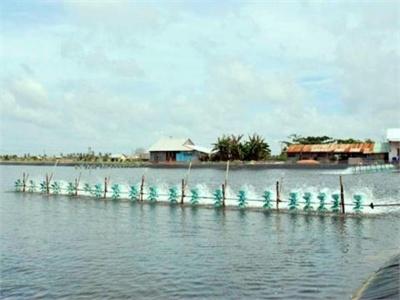Tác Nhân Gây Bệnh Hoại Tử Gan Tụy Cấp Tính Đã Được Nhận Diện

Theo thông tin báo cáo từ trang web: AquaticHealth.net thì tác nhân gây bệnh hoại tử gan tụy cấp tính ở tôm đã được nhận diện là Vibrio parahaemolyticus bị chèn phage. Nguồn thông tin khác từ GAA (Global Aquaculture Alliance) thì GS. Lightner cũng đã công bố kết quả tác nhân gây bệnh EMS là 1 chủng vi khuẩn lây nhiễm cao của loài Vibrio parahaemolyticus bị nhiễm Virus hay còn gọi phage làm cho vi khuẩn này phóng thích độc tố hủy hoại gan tụy và cơ quan tiêu hóa của tôm - chủng vi khuẩn này khu trú trong hệ thống tiêu hóa của tôm.
Nguồn thông tin theo các báo cáo dưới đây:
early mortality syndrome ~ EMS
Article Content
Intrafish Reports
http://www.intrafish.com/news/article1369134.ece
You will need to subscribe to read this article.
Identified cause: Vibrio parahaemolyticus with phage
May 1, 2013
United States
Arizona—Dr. Lightner Finds the Cause of EMS
On May 1, 2013, the Global Aquaculture Alliance (GAA) reported that Dr. Donald Lightner, the famed shrimp pathologist at the University of Arizona, had found the cause of early mortality syndrome (EMS), a disease that is costing the shrimp farming industry a billion dollars a year.
Lightner’s team found that EMS is caused by a unique strain of a relatively common bacterium, Vibrio parahaemolyticus, that is infected by a virus known as a phage, which causes it to release a potent toxin. The bacterium is transmitted orally, colonizes the shrimp gastrointestinal tract and then produces a toxin that causes tissue destruction and dysfunction of the hepatopancreas, the shrimp’s digestive organ.
Research continues on the development of diagnostic tests for rapid detection of EMS that will enable improved management of hatcheries and ponds. It will also enable a better evaluation of the risks associated with importation of frozen shrimp or other products from countries affected by EMS.
Some countries have implemented policies that restrict the importation of frozen shrimp or other products from EMS-affected countries. Lightner said frozen shrimp likely pose a low risk for contamination of wild shrimp or the environment because EMS-infected shrimp are typically very small and do not enter international commerce. Also, his repeated attempts to transmit the disease using frozen tissue were unsuccessful.
In an effort to learn from past epidemics and improve future policy, the World Bank and the Responsible Aquaculture Foundation, a charitable education and training organization founded by the Global Aquaculture Alliance, initiated a case study on EMS in Vietnam in July 2012. Its purpose is to investigate the introduction, transmission and impacts of EMS, and recommend management measures for the public and private sectors.
Information: Media Inquiries, Steven Hedlund, GAA Communications Manager (phone +1-207-831-0196, emailsteven.hedlund@gaalliance.org); Technical Questions, George Chamberlain, GAA President (phone +1-314-607-8466, email georgec@gaalliance.org).
Information: Donald V. Lightner, Department of Veterinary Science and Microbiology, The University of Arizona, Building 90, Room 102,117 E. Lowell Street, Tucson, Arizona 85721, USA (phone 1-520-621-4438, fax 1-520-621-4899, email dvl@email.arizona.edu, webpage http://www.microvet.arizona.edu/research/aquapath/index.htm).
Source: 1. Global Aquaculture Alliance. Press Release. Cause of EMS Shrimp Disease Identified. May 1, 2013.
Related news
Tools

Phối trộn thức ăn chăn nuôi

Pha dung dịch thủy canh

Định mức cho tôm ăn

Phối trộn phân bón NPK

Xác định tỷ lệ tôm sống

Chuyển đổi đơn vị phân bón

Xác định công suất sục khí

Chuyển đổi đơn vị tôm

Tính diện tích nhà kính

Tính thể tích ao



 Tổng Hợp Xoay Quanh Vấn Đề “5 Đúng”…
Tổng Hợp Xoay Quanh Vấn Đề “5 Đúng”…  Nguyên Nhân Của Bệnh Hoại Tử Gan Tụy…
Nguyên Nhân Của Bệnh Hoại Tử Gan Tụy…